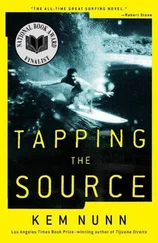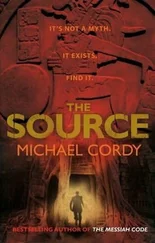For example, when Tabari found the two pieces of pottery marking Level XIII, he also came up with a good deposit of burned ram’s horn near them, laid down as part of a general conflagration which must have destroyed Makor at that time. Cullinane, listening to the deductions of Vered Bar-El, made his sketch and put down his estimate of the probable date. But at the same time he airmailed carbon samples to the laboratories in America and Sweden and awaited confirmation or alteration of his guess.
Throughout the history of life on earth, two kinds of carbon have been available to all living things. Carbon-12 is the normal, stable substance familiar to anyone who has cleaned a stove or burned dead leaves in autumn, and each living object contains substantial amounts of this carbon. Plants get it through photosynthesis, animals through the plants they eat. Carbon-14, on the other hand, is an unstable, radioactive substance heavier than normal carbon. It is formed in the earth’s upper atmosphere and finally mixes itself into our atmosphere in the almost imperceptible ratio of one-trillionth of a part of Carbon-14 to one part of Carbon-12. But even such a slight trace of the heavier carbon is detectable in all things that live or have ever lived; as long as they continue to live they absorb Carbon-14, but at the moment of death they absorb no more.
Carbon-14 would be of no significance to archaeologists except for a peculiarity which makes it invaluable. At the death of a living organism, its Carbon-14 content, which is non-stable, begins to disintegrate, losing half its remaining total every 5,500 years. For example, if the ram’s horn that Jemail Tabari dug out of the fire-level at Makor were found to retain only half its Carbon-14, it could be dated roughly 3535 B.C.E., plus or minus 330 years, so that the ram which grew the horn must have died sometime between the years 3205 B.C.E., and 3865 B.C.E.
Laboratories determine the Carbon-14 content in a sample by counting the number of Carbon-14 disintegrations per minute per gram of ordinary carbon. Living samples give off 15.3 such disintegrations a minute; those that died in 3535 B.C.E. give off half that number, or 7.65; and those that died in 9035 B.C.E. yield 3.83 disintegrations per minute. Unfortunately, material that died more than 50,000 years ago yields such a diminished rate that present instruments cannot accurately measure the disintegrations, so that dates earlier than 70,000 are largely guesswork, although a similar substance, potassium argon, promises to yield reliable dates back to two million years. Cullinane had submitted his carbon samples to two different laboratories—he had more than forty to choose from, in countries from Australia to Switzerland—so that one result could be checked against the other.
While the archaeologists waited for reports to confirm their guess of 1400 B.C.E. for Level XIII, the harvest season approached and the kibbutz works committee began to recall their people for that job, so that one by one the rugged diggers were taken from the tell. They hated to go, and General Reich’s daughter protested at being forced to leave the dig just as the intellectually challenging sequences were being brought to the surface, but the girls were needed and Dr. Cullinane assured them that next spring they could have their jobs back, and for many years into the future. He watched with regret as their lovely bare legs tramped out of his office to head for the gleaning as Jewish maidens had done at Makor thousands of years before. “They’re wonderful kids,” he sighed, and the dig stumbled into inaction because of no help.
Dr. Eliav solved the work problem one morning by announcing that he had made contact with the Jewish Agency and they had agreed to allocate from the next immigrant ship twenty-four Moroccans to Kibbutz Makor for work at the dig. “They’ll be pretty rough diamonds,” Eliav warned. “No English. No education.”
“If they speak Arabic I can handle them,” Tabari assured the leaders, and two nights later the team went to greet the large ship that plied monotonously back and forth across the Mediterranean hauling Jewish immigrants to Israel.
“Before we go aboard,” Eliav summarized, “I’ve got to warn you again that these aren’t the handsome young immigrants that you accept in America, Cullinane. These are the dregs of the world, but in two years we’ll make first-class citizens of them.” Cullinane said he knew, but if he had realized how intellectually unprepared he was for the cargo of this ship, he would have stayed at the tell and allowed Tabari to choose the new hands.
For the ship that came to Israel that night brought with it not the kind of people that a nation would consciously select, not the clean nor the healthy nor the educated. From Tunisia came a pitiful family of four, stricken with glaucoma and the effects of malnutrition. From Bulgaria came three old women so broken they were no longer of use to anyone; the communists had allowed them to escape, for they had no money to buy bread nor skills to earn it nor teeth to eat it with. From France came not high school graduates with productive years ahead of them, but two tragic couples, old and abandoned by their children, with only the empty days to look forward to, not hope. And from the shores of Morocco, outcast by towns in which they had lived for countless generations, came frightened, dirty, pathetic Jews, illiterate, often crippled with disease and vacant-eyed.
“Jesus Christ!” Cullinane whispered. “Are these the newcomers?” He was decent enough not to worry about himself first—although he was appalled at the prospect of trying to dig with such assistance—but he did worry about Israel. How can a nation build itself strong with such material? he asked himself. It was a shocking experience, one that cut to the heart of his sensibilities: My great-grandfather must have looked like this when he came half-starved from Ireland. He thought of the scrawny Italians that had come to New York and the Chinese to San Francisco, and he began to develop that sense of companionship with Israel that comes very slowly to a Gentile: it was building itself of the same human material that America was developed upon; and suddenly he felt a little weak. Why were these people seeking a new home coming to Israel and not to America? Where had the American dream faltered? And he saw that Israel was right; it was taking people—any people—as America had once done; so that in fifty years the bright new ideas of the world would come probably from Israel and no longer from a tired America.
Nevertheless, he was startled to find that exactly half the twenty-four people promised him were comprised of Yusuf Ohana and his family from Morocco. Yusuf looked to be seventy, but he had three wives, one apparently his age, one forty and one twenty. The latter was pregnant, and the others had eight children between them. When Yusuf moved—a tall, thin man in dirty robes and turban—it was as if a perpetual dust storm moved with him, for he was obeyed. A Jew who came from a small town near the Atlas Mountains, he had lived as if he were still in Old Testament times, and his word was patriarchal law. Tabari greeted him in a mixture of French and Arabic, explaining that he and his family would be working for Dr. Cullinane until the kibbutz found permanent homes and work for them. Yusuf nodded, and with a grand gesture of his hands over the members of his brood, said that he would see that they worked well, but Cullinane noticed that he and his first wife were nearly blind. What can they do? he thought.
The other twelve newcomers were from various nations, and when they were all in the special bus that would carry them to Makor, the man from the Jewish Agency passed among them, handing them parcels of food, Israeli citizenship papers, unemployment insurance for a year, rent money, health insurance, and cellophane bags of candy for the children. In Arabic he shouted, “You are now citizens of Israel, and you are free to vote and criticize the government.” At the door he bowed and left.
Читать дальше








![Джеймс Купер - Пионеры, или У истоков Саскуиханны [The Pioneers, or The sources of the Susquehannah]](/books/395797/dzhejms-kuper-pionery-ili-u-istokov-saskuihanny-t-thumb.webp)

